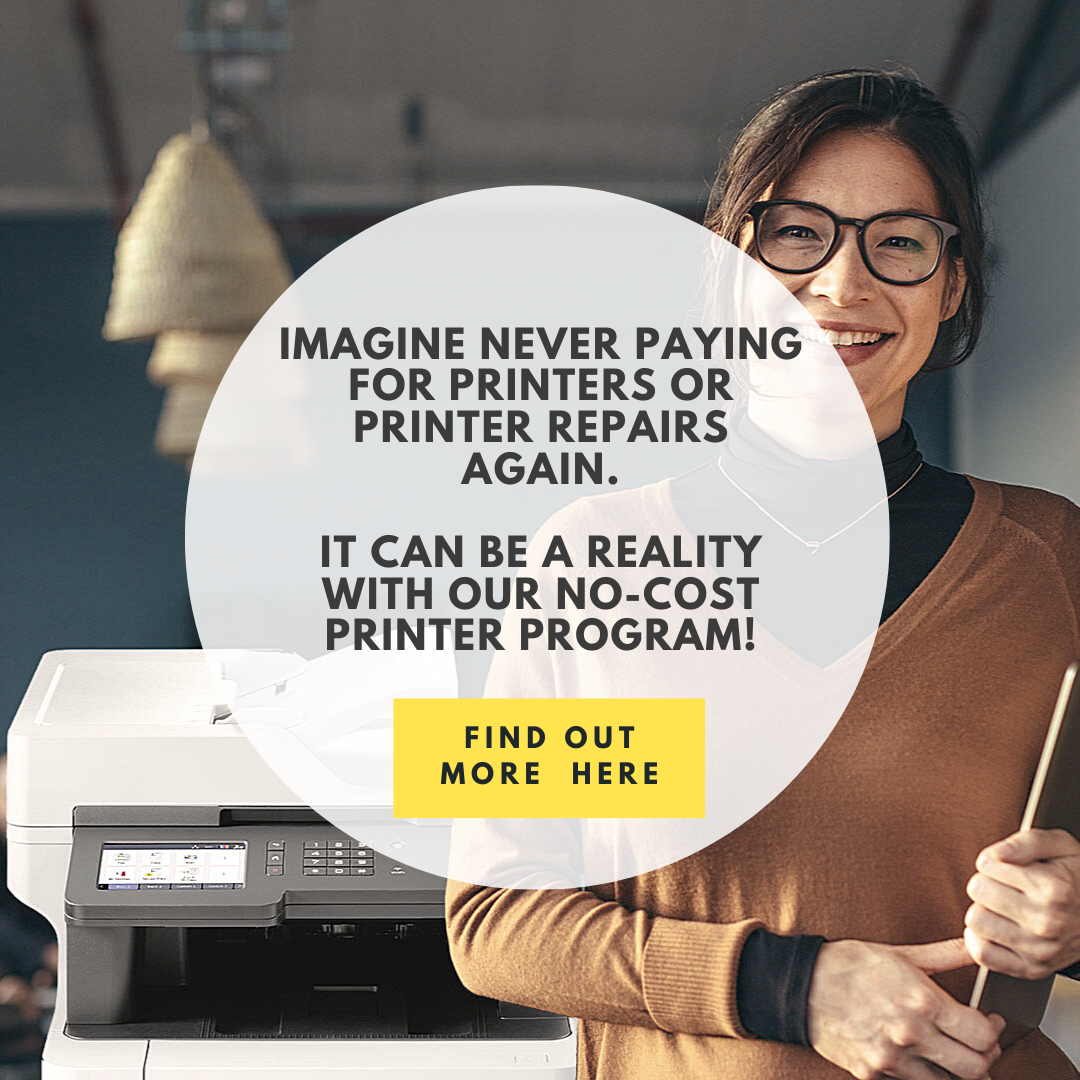It is said this is the epitaph on the tombstone of most failed companies: “We’ve Always Done It This Way.” This failure ranges from the antiquated ideas of leadership to standard office practices that hemorrhage time and money to the point a business collapses. To the latter, you can certainly include office printing: a cost that continues to rise in many verticals and is now just below that of office rent, utilities, and payroll. Let’s call it death by a thousand (paper) cuts.
Maybe you can’t do anything about your CEO wanting to open a chain of video retail stores or investing stock in Yahoo! But by following these cost-cutting initiatives for office printing, you’ll have a key role in making sure your company stays away from the business graveyard.
Get with the program by creating a program
The harsh truth is that 90% of offices have no formal print policy in place, while two-thirds don’t track their printing expenses. When you compare these numbers with the reality that the average office worker prints 10,000 pages per year at the cost of about $725, buying Yahoo! stock suddenly seems like a good investment.
Whether you’re the office manager, IT person, or leadership, implementing an office printing program can go a long way with the budget.
Here some initiatives to include in your program:
- Restricting color printing (costs five to seven times more than black and white)
- Printing on two sides of a page for in-house docs
- Forward-looking ink or toner ordering cartridge, instead of reactive
- Print managed services that service printers and track every doc printed – and has been proven to reduce business costs by 20-30%
- Reusing printed paper and enforcing paper-less meetings (get you some whiteboards, and even draw this list on one!)
Oh, and believe it or not, the type of font you use can make a difference. For example, Calibri, Times New Roman, and Century Gothic employ less ink and toner while Arial depletes cartridges at a far faster rate.
Think mean, lean, and green
A sensible printing program helps sustainability and budget, sure, but more can be done when it comes to printers and other imaging devices.
According to the Environmental Protection Agency (EPA), older printers and office copiers cost approximately $225 per year in energy costs alone. The EPA also states that if your printer/copier/multifunction device is older than five years, its consumption is approximately 50% higher than a new machine. These days, New Energy Star qualified printers use a fraction of the energy – and are 40-55% more efficient than standard models.
In short, conduct an inventory of your printers and consider investing in newer models. This includes fax, copy, and multifunctional devices.
Keep this in mind when shopping: Only two percent of office printing is done on ledger size paper (11 x 17 inches). Machines that offer nonstandard paper size tend to be far more expensive than those with a limited 8.5 x 11 trays.
Also, laser printers tend to be more expensive but operate at a lower cost per page in small and medium-sized business environments. One inkjet-printed page costs about 7-10 times more than one laser printed page when you factor in ink and paper costs, electricity, and service/maintenance.
Get the most out of your printer
Beyond a greener and more efficient printer, here are some more tips for cost-cutting initiatives:
- Leverage sleep mode and/or automatic shut off
- Send large print jobs to the most efficient device in the office (the more expensive the printer or multifunction device, the less expensive the cost per page to print)
- Set your printer to “draft mode”
As you can see, being green typically means saving costs, but don’t skimp by going slightly green if you want to get out of the “always done it this way” mode.
Stay green for that green in your corporate account
According to statistics, more than 375 million empty ink and toner cartridges are thrown out annually, most ending up in landfills. That’s about 11 cartridges per second. A print cartridge takes about 1000 years to decompose in a landfill. What’s more, older printers either join cartridges in landfills or end up taking valuable inventory space in offices. There are several options to recycle printers that include:
Of course, Google can be your environmental friend with finding a recycling source, as there are local options depending on where you live.
When it comes to print and toner cartridges, beyond recycling, your sensible printer program will go a long way, as well as considering remanufactured cartridges instead of big brand ones.
But does your company really have time for this? Will it make a difference in growing your business?
You bet it does. From printing to beyond. Research states that sustainability practices provide these benefits for brands:
- Happier employees
- Superior job candidates
- Better branding
- More innovation
That all adds up to money made and money saved — more so as environmentally conscious Millennials and Gen Zers move up the consumer ladder.
Just change
As mentioned, companies that never evolve end up as dead as the BlackBerry dodo. No change is perfect, of course, but the important thing is to try. As data shows, embracing sustainability practices generates wins in so many areas.
On the printing program side, know that regardless of what you roll out, print volumes tend to decrease by about 10% when people believe their print usage is being monitored. That’s money in the bank.
The only way you lose is when you don’t change, and your company ends up in that business graveyard while more cartridges and printers end up in landfills.







